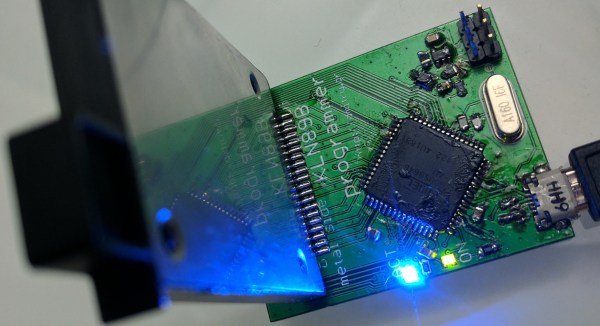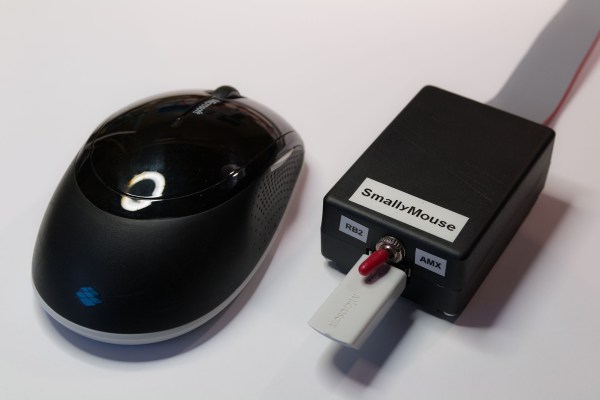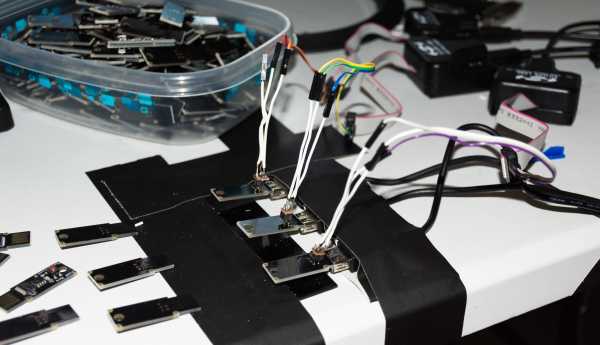It’s been nearly a year since Microchip acquired Atmel for $3.56 Billion. As with any merger, acquisition, or buyout, there has been concern and speculation over what will become of the Atmel catalog, the Microchip catalog, and Microchip’s strategy for the coming years.
For the Hackaday audience, this is a far more important issue than Intel’s acquisition of Altera, On Semi and Fairchild, and even Avago’s purchase of Broadcom in the largest semiconductor deal in history. The reason Microchip’s acquisition of Atmel is such an important issue is simply due to the fact the Hackaday community uses a lot of their parts. This was a holy war, and even changing the name of a line of chips to ‘MCMega’ would result in a consumer rebellion, or at least a lot of very annoying tweets.
For the record, I’ve tried my best to figure out what’s going on with Microchip’s acquisition of Atmel for the last few months. I’ve talked to a few Microchip reps, a few Atmel reps, and talked to a few ‘out of band’ connections – people who should know what’s going on but aren’t directly tied to either Atmel or Microchip. The best I’ve come up with is a strange silence. From my perspective, it seems like something is going on, but no one is saying anything.
Take the following with several grains of salt, but Microchip recently got in touch with me regarding their strategy following their Atmel acquisition. In a few thousand words, they outlined what’s going on in casa Microchip, and what will happen to the Atmel portfolio in the future.
Broad Strokes
In broad strokes, the Microchip PR team wanted to emphasize a few of the plans regarding their cores, software, and how Microchip parts are made obsolete. In simple, bullet point terms, this is what Microchip passed on to me, to pass on to you:
- Microchip will continue their philosophy of customer-driven obsolescence. This has historically been true – Microchip does not EOL parts lightly, and the state of the art from 1995 is still, somewhere, in their catalog.
- We plan to support both Atmel Studio 7 and MPLAB® X for the foreseeable future.
- Microchip has never focused on “one core”, but rather on the whole solution providing “one platform.” This is also true. A year ago, Microchip had the MIPS-based PIC-32 cores, a few older PIC cores, and recently Microchip has released a few ARM cores. Atmel, likewise, has the family tree of 8 and 32-bit AVR cores and the ARM-based SAM cores.
- We will continue to support and invest in growing our 8-bit PIC® and AVR MCU product families.
Specifics
In addition to the broad strokes outlined above, Microchip also sent along a few questions and answers from Ganesh Moorthy, Microchip’s President and COO. These statements dig a little bit deeper into what’s in store for the Microchip and Atmel portfolios:
How will the 32-bit products complement each other? Atmel has a few 32-bit microcontrollers, like the SAM and AT32 series. Microchip has the PIC-32. The answer to this question is, “Many of the 32-bit MCU products are largely complementary because of their different strengths and focus. For example, the SAM series has specific families targeting lower power consumption and 5 volts where PIC32 has families more optimally suited for audio and graphics solutions. We plan to continue investing in both SAM and PIC32 families of products.”
Will Atmel’s START support 8-bit AVRs? “Yes, although it is too early to commit to any specific dates at this stage, we consider modern rapid prototyping tools, such as START and the MPLAB Code Configurator, strategic for the our customers to deliver innovative and competitive solutions in this fast-paced industry.”
Now that Microchip has a complete portfolio of low-power, inexpensive 32-bit microcontrollers, will the focus on 8-bit product be inevitably reduced? “No, we see that in actual embedded control applications there is still a large demand for the type of qualities that are uniquely provided by an 8-bit product such as: ease-of-use, 5V operation, robustness, noise immunity, real-time performance, long endurance, integration of analog and digital peripherals, extremely low-static power consumption and more. We don’t think that the number of bits is an appropriate / sufficient way to classify a complex product such as the modern microcontroller. We believe that having the right peripherals is actually what matters most.”
Security, Memories, WiFi, and Analog products. For both Atmel and Microchip, the most visible products in each of their portfolios is the lineup of microcontrollers. This isn’t the limit of their portfolios, though: Atmel has space-grade memories, Microchip has some very useful networking chips, and both companies have a number of security and crypto chips. In the statements given by Moorthy, very little will change. The reason for this is the relative lack of overlap in these devices. Even in segments where there is significant overlap, no EOLs are planned, circling back to the, “philosophy of customer-driven obsolescence.” In other words, if people keep buying it, it’s not going away.
The Takeaway
What is the future of Microchip post-Atmel acquisition? From what I’m seeing, not much. Microchip is falling back on their philosophy of ‘customer-driven obsolescence’. What does that mean? Any non-biased assessment of Microchip’s EOL policy is extremely generous. The chip found in the Basic Stamp 1, from 1993, is still available. It’s not recommended for new designs, but you can still buy it. That’s impressive any way you look at it.
The one thing we’re not getting out of this pseudo press release is information about what Atmel will be called in a few years. Will the Atmel mark be subsumed by a gigantic letter ‘M’? Will the company retain two different trademarks? There is no public information about this.
Yes, I know this post is a nearly verbatim copy of a pseudo press release. I’m not particularly happy this information was presented to me this way, but then again, the Atmel/Microchip ecosystem has been impressively secretive. This is the only information that exists, though, and I’m glad to have it in any event.
That said, there are a lot of people in the Hackaday community that want to know what the deal is with Microchip and Atmel. Short of pulling Jerry Seinfeld out of retirement, this is the best we’re going to get for now. Of course, if you have any info or speculation, the comments below are wide open.


















